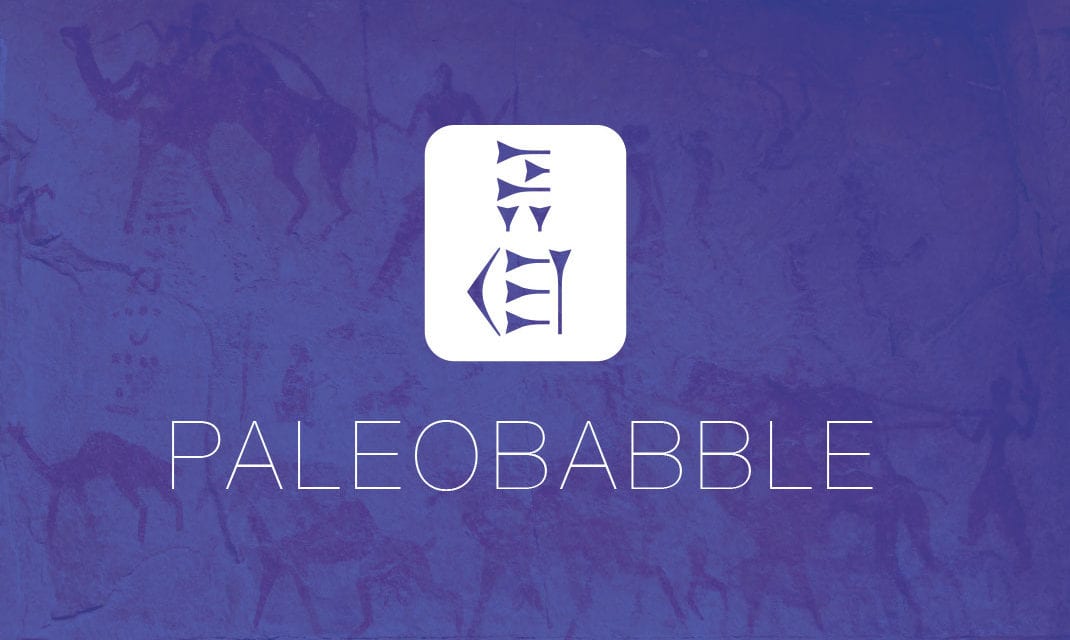Yes, you read that correctly.
Jason Colavito just posted about this piece of wacky Bible interpretation. It’s a good post, made entertaining by the fact that the notion of pterosaurs in the Bible comes to us from Ken Ham’s creation ministry. It’s biblical paleobabble like this that discredits the serious scientists who believe in creation from contributing to the discussion. They don’t want to be put in the same category as Ken Ham. Who can blame them?
At any rate, if you read Jason’s piece, which links to Ben Stanhope’s blog where Ben posted about a trip to Ken Ham’s creation museum, you’ll discover that some of the wackiness relates to the “flying serpents” mentioned a couple times in the Old Testament. Scholars have known for some time, based on word study (especially the noun seraph) and comparison of the biblical material with Egyptian material, that there are likely two explanations for the language: (1) the “fiery seraph” likely speaks to the spitting cobra (“fiery” = the burning sensation that comes when you’re unlucky enough to get sprayed or bitten); and (2) when cobras are ready to strike the flanges of skin on either side of their head spreads out, giving the impression of “wings” – hence “flying seraph”. Egyptian has the same word (seraf) for this type of serpent, which was also conceived of as a cosmic throne guardian (recall the cobra motif in Egyptian iconography).
A good scholarly article on the above (if you have access to scholarly journals via a library membership to the ATLA or JSTOR databases) is:
Philippe Provençal, “Regarding the Noun SERAPH in the Hebrew Bible,” Journal for the Study of the Old Testament 29:3 (2005): 371-379.
Note that “SERAPH” in the article title is actually in Hebrew characters, so you probably won’t be able to use it as a keyword search term. I just used English characters here.
Sorry Ken. No pterosaurs in the Bible.
But let’s hope Project Pterosaur has better luck!








Thanks, Mike. Now my faith is shaken. 😉
that’s what I’m here for!
Okay, I definitely want more resources for comparative culture and the OT narratives. That a “fiery seraph” is an angry cobra makes sense, but you won’t see that kind of information almost anywhere! Malina’s work is great with that stuff in the NT books but I’ve not found parallel work for the more distant cultural cues.
Thanks; this is why access to reference material and journals is a big deal. It’s also why scholars laugh at the paleobabblers who think scholars haven’t addressed this or that – since the internet isn’t going to give them peer-review credit for tenure (or reputation) that isn’t where they publish!
Exactly, I’ve blogged about that topic before (relying on the internet as a source of data) as it relates to spiritual issues. Unfortunately, what such a system also does it make it less likely for the average person (or even pastor, etc.) to be exposed to such critical exegesis (even if summarized, like in a commentary) And that keeps a separation between scholar and student in place that I think is hurting the faith as culture becomes more scientific. Anyway, thanks for the info., things like this are why I keep coming to your site! If only there were more like you…just such fascinating material!
Ken Ham is a strong man of the faith. Everything he does is with the goal to show Christians that they can trust the truth of Genesis. The Creation Museum is probably THE most influential ministry of our generation pointing people to Christ through God’s words in Genesis. The Museum does use speculation to offer possible explanations, but it is clearly labeled as such. Without doubt some of these theories are wrong and some of Ken’s ideas are wrong (that pesky human trait that many of us struggle with). He is under constant attack by atheists. What a shame to be ridiculed by his fellow believers, too. A discussion of his incorrect ideas should be handled with kindness and humility; he is your fellow brother in Christ.
I know he means well, but it’s no service to handle the Word so poorly. Sanctified incompetence is still incompetence. Paul told Peter he was wrong (Galatians 2:11-14), so I think I can say Ken Ham is way off base here, especially when what he says is so goofy it *prevents* people from considering creationism of any persuasion. Paul and Peter were brothers in Christ, too. Ham ought to stop putting forth ideas that have no basis in sound interpretation.
I am sure we would all agree that we need to speak up when a fellow believer is teaching error, but it’s possible to do it without being condescending.
I’m typically not diplomatic about abuse of the Bible.
Kristina, I agree with you — when the person is making an honest error. But Ken Ham is a repeat offender, and an unrepentant on at that.
Condescension can be earned.
I thought you might get a kick out of AinG’s unicorn claim (number 2) in a new critique I’ve written of the museum here:
http://benstanhope.blogspot.com/2016/04/10-ways-answers-in-genesis.html
good grief…